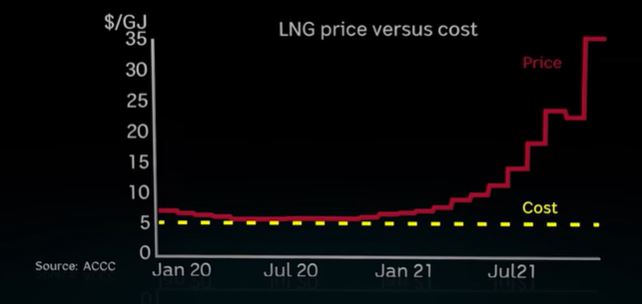The AWU is a lot better than the Albo’s cowards:
With four cabinet ministers focused on the task, AWU national secretary Daniel Walton told the government to quit dithering and act.
He said the heads of agreement negotiated two weeks ago with the gas exporters by Resources Minister Madeleine King, and the current voluntary code of conduct that governs how supply contracts are negotiated, were “thoroughly insufficient”.
He proposed five measures which, he said, would not create a sovereign risk by threatening export contracts with Japan and other major customers.
The measures are a gas price cap enforced by the ACCC in the same way it sets a maximum price for retail electricity prices and fixing the code of conduct by “putting it in the hands of the ACCC, taking it from a toothless paper tiger to an enforceable set of rules to rein in cartel conduct by the gas industry”.
Mr Walton also recommends inserting a price trigger into the Australian Domestic Gas Security Mechanism, or “gas trigger”, so exporters are forced to divert more product to the domestic market when a price point is reached. At the moment, the gas trigger must only guarantee adequate supply.
He also suggests cracking down on gas exporters “who game loopholes in the heads of agreement by only making short-term offers for uncontracted gas, and instead ensuring that offers are long enough to give confidence to manufacturers”.
The AWU also wants an energy crisis summit with manufacturers, electricity generators and unions “to understand the scale of the crisis and needs of industry”.
This is the cost-plus model I have been banging on about. It’ll work just fine. Frankly, we only need point one. It covers the rest.
Make it $7Gj and many problems are solved all at once: power shock, energy transition, inflation, and manufacturing.
The ACCC chart speaks for itself:

There are still two problems. It does not fix the grotesque under-taxation of the gas cartel. But I guess that could be done separately.
Second, it does not address the coal price which will also be necessary to drop power prices in NSW and QLD. It would be difficult to apply the same model because the sector is more fragmented.
Then again, if a reasonable regulated cost-plus price is struck, say $100 per tonne, then it would work for coal as well.
Do it!

